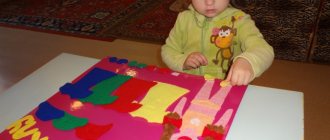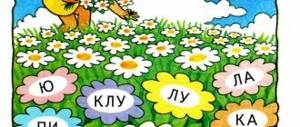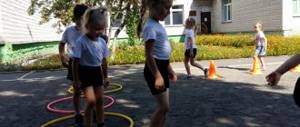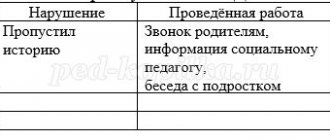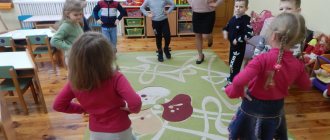Private educational institution modern modular center "Development"
Ivanova Ekaterina Vadimovna Teacher-speech therapist
Fakhrutdinova Laysan Nazipovna teacher
MBDOU "Kindergarten No. 8 of a combined type" of the Sovetsky district of Kazan
lexical topics (Fruits, vegetables and animals), develop memory, attention, perception, imagination, communication and speech skills, develop interest in the game
Materials: chest, three paths with marked numbers and pasted-on attributes of lexical topics, bag, attributes (in this case, one fruit, vegetable and animal), key, gifts
The structure of the didactic game.
The structure of the didactic game is based on the relationship of five main components:
didactic task,
game task,
game actions,
rules of the game
result (summarizing).
Didactic task: Summarize and systematize children’s knowledge on lexical topics Fruits, Vegetables, Animals (or any other topics covered)
Game task: Who in the group are the best experts on fruits, vegetables and animals
Game actions: after tactile selection from the bag, find your path with one or another attribute. This is the first game action. The second game action is to guess the teacher’s riddles/tasks, moving faster towards the magic chest, in which a gift awaits the winner. By answering the opponent’s questions, the child moves faster.
Rules of the game: You need to get to the Magic Chest as quickly as possible and get a key from the teacher to open it and find a gift there. There are three tasks in total on each track. Lanes are allocated by playing "Guess What's in the Bag?" (they hide a fruit, a vegetable and an animal there, a picture that is pasted on the path).
The first task is riddles on a lexical topic. If the one to whom the teacher asks a question does not know the answer, then the other participants in the game pick up their object from the bag, and if the answer is correct, make a move one square, thereby moving towards the cherished goal faster.
The second task is called “Connoisseurs of Fairy Tales.” The child is asked to listen to a line from a fairy tale on his topic. And again, if the one to whom the teacher asked a question does not know the answer to it, then the remaining participants in the game raise their object, and if the answer is correct, make a move one square.
The third task is attention.
If the word relates to its lexical topic, then you need to sit down, if not, then raise your hands up.
The final task is a spare one if all the children did everything correctly
Blitz survey
Name as many vegetables/fruits/animals as possible, in order of your turn, quickly, without thinking.
Result - At the end of the game, the teacher sums up the game (clarifies the actions that the children performed during the game), praises the children. There is one winner who answers all the questions the fastest and most correctly. The children updated their knowledge on the lexical topics covered. When performing didactic tasks, children show intelligence, resourcefulness, attention, and memory. All this gives them moral satisfaction, increases confidence in their strength, and fills them with a feeling of joy.
Card index of didactic games for speech development “Wonderful bag” (p. 1)
Card index of didactic games for speech development
"WONDERFUL BAG"
Goal: focus on the gender of a noun when defining an object by its characteristics.
Materials: hare, carrot, cucumber, apple, tomato, bag.
Let’s tell the children something like this: “A hare came to our kindergarten. Running bunny, what's in your bag? Can I have a look? What is this? (Carrot.) What carrot? (Long, red.) Put the carrots on the table. And what's that? (Cucumber.) What cucumber? (In the same way we take out a tomato, apple, etc.)
Now the hare wants to play with you. He hid all the vegetables and fruits in a bag. The bunny will put his paw into the bag, take a vegetable or fruit and tell you about it, and you must guess what the bunny has in his paw. Listen carefully. It is long and red. What is this? (Carrot.) It is green and long. What is this? (Cucumber.) It is round and red. What is this? (Apple.) It is round and red. What is this? (Tomato.)"
If the children answer the last two questions incorrectly, we repeat, emphasizing the pronoun in our voice: “Listen again. It is round and red. It's round and red.
Now find and put vegetables in the bag. What's left? (Apple.) Apples are fruits. Thank you, hare, for coming to us. Goodbye".
"MULTI-COLORED CHEST"
Goal: learn to focus on endings when agreeing words in gender.
Materials: chest, object pictures: egg, cookies, jam, apple, towel and other objects designated by neuter and feminine nouns, according to the number of children.
Let's put a chest with pictures on the table. We will invite the children to take out the pictures one at a time, while asking questions: “Which egg? What matryoshka?” Etc. The interrogative pronoun agrees with the noun and helps the child correctly determine the gender of the latter.
If the pictures show 2-3 objects, the game will take on a new meaning: the child will be able to practice forming the nominative plural forms of nouns.
"TEREMOK"
Goal: focus on the ending of a verb in the past tense when agreeing it with a noun.
Materials: wooden house, toy animals: mouse, frog, bunny, fox, wolf, bear.
Let's put a tower on the carpet. We will place the animals near the tower. We will tell a fairy tale, encouraging children to take part in the telling.
— There is a tower in the field. She ran to the tower... who? That's right, mouse. (Children give hints based on the meaning of the verb and its ending.) “Who lives in the little house?” Nobody here. The mouse began to live in the little house.
A frog galloped up to the tower. Etc. In conclusion, let's summarize:
- Listen to how we say: the frog galloped, and the bunny galloped; the fox came running, and the wolf came running.
“WHAT’S MISSING?”
Purpose: to practice the formation of genitive plural forms of nouns.
Materials: pairs of objects: nesting dolls, pyramids (large and small), ribbons (of different colors and different sizes - long and short), horses, ducklings, Pinocchio, bag.
Pinocchio appears in front of the children with a bag. He says that he brought toys for the guys. Children look at toys. They call them. They put it on the table.
We comment:
- What is this? Matryoshka. Let's see what's inside the nesting doll. Another matryoshka. Place them next to each other. Vova, now take out the toy. What is this? (Pyramid.) Is there another pyramid? Etc.
- Remember what items are on the table. There are pyramids, nesting dolls, and ducklings. Pinocchio will play with you. He will hide toys, and you will have to say which toys are gone: nesting dolls, pyramids, ducklings or something else.
Three pairs of objects remain on the table: nesting dolls, pyramids, horses. Children close their eyes. We hide the nesting dolls and put ribbons in their place. (“Who’s missing?”) Then we hide the ribbons and put pyramids in their place. (“What’s missing?”) Etc. Finally, we remove all the toys and ask: “Which toys are missing?”
“WHERE ARE OUR HANDS?”
Purpose: to practice the formation of genitive plural forms of nouns.
Children sit on chairs. Let's address them, inviting them to a joke or a game with intonation:
Where are our pens? Our pens are gone! (We hide our hands behind our backs. Children do the same.) Here are our hands! (We show our hands and play with our fingers.)
- Where are our legs? Our legs are gone! (Children hide their legs under the chair.) Here are our legs! (They stomp their feet.)
- Where are our pens? What's missing? (Pens.) Here are our pens! - Where are our legs? What's missing? (Nozhek.) Here are ours
legs!
The game is repeated 2-3 times.
"LOTTO"
Purpose: to practice the formation of plural forms of nouns (in the nominative and genitive cases).
Materials: pictures depicting objects in the singular and plural (matryoshka - nesting dolls, bucket - buckets, wheel - wheels, ring - rings, etc.).
We distribute pictures to the children, keeping the paired ones. We explain the conditions of the game:
- This is a game of attention. I will show pictures. Each picture shows a toy. Anyone who has a picture with the same toys should quickly say so. For example, I have a wheel. And Vera has wheels. Faith must quickly say, “I have wheels,” or “I have many wheels.” Toys must be named.
The one who hesitates gives his picture to an adult. If the child quickly and correctly names the toy, we give our picture to him.
At the end of the game, the losers (who do not have pictures on their hands) are offered comic tasks: jump on one leg, jump high, sit down three times, etc. We come up with tasks together with the children.
"ORDERS"
Purpose: to practice the formation of imperative forms of the verbs to jump, to go.
Materials: truck, mouse, bear.
We bring a truck and a mouse and a bear into the room. We address the children:
— Do you want the mouse and the bear to ride in a truck? If you want, ask them. You have to say: “Bear, go!” You can also ask the mouse and the bear to jump: “Mouse, jump!” (Requests are accompanied by actions with toys.)
- Oleg, who do you want to ask, a mouse or a bear? What will you ask for?
The game continues until the children's interest in it runs out.
“BEAR, LEAN!”
Purpose: to practice the formation of imperative forms of the verbs lie, sing.
Materials: teddy bear (voiced toy).
A bear cub comes to visit the children. We tell you that he knows how to carry out orders. You can ask the bear: “Bear, lie down on your side... lie down on your back... lie down on your tummy.” He can also sing, you just need to ask: “Bear, sing!” (The story is accompanied by actions with the toy.)
At the request of the children, the bear cub performs various tasks. If the child finds it difficult to formulate the task, we ask leading questions: “Do you want the bear to lie down? On the tummy or on the back? Let’s say together: bear, lie down on your tummy.”
You can give the bear cub other tasks: go (down the hill), jump, dance, write a letter, etc.
"HIDE AND HIDE"
Goal: correctly use prepositions with spatial meaning in speech (in, on, about, under, before).
Materials: truck, bear, mouse.
The bear and the mouse are visiting the children again. The guests began to play hide and seek. The bear leads, and the mouse hides. We invite children to close their eyes. We say:
— The mouse hid. Open your eyes. The bear is looking: “Where is the mouse? He’s probably under the car?” No. Where is he, guys? (In the cockpit.) Look where he got into!
Close your eyes again, the mouse will hide again. (We put the mouse on the cabin.) Where is the mouse? Guys, tell the bear!
Get full text
In the same way, children, together with the teddy bear, look for a mouse that is hiding under the car, near the car, in front of the car.
Games and exercises with grammatical content can be included in group lesson scenarios, or can be carried out at the request of children with small subgroups during leisure hours. You can organize games with children, with the help of which they would learn to correlate the producing and derivative words. This is done on the basis of nouns denoting animals and their young. The formation of methods of verbal word formation is closely related to form formation. It is carried out in outdoor games, dramatization games, and special didactic games.
"LOST"
Goal: match the name of the animal with the name of the baby.
Materials: toy house, animals (toys): duck and duckling, hen and chick, goat and kid, cow and calf, horse and foal.
Let's place adult animals around the room. Their cubs are on the carpet in the house. Let's invite the children to find out who lives in the house.
- Let's get a look. Quack-quack-quack - who is it? Duck? We take out the toy from the house. Is the duck big or small? Small? This, guys, is a duckling. Little duckling. And the duck is his mother. Help the duckling find his mother duck. Vasya, take the duckling. Look for the duck.
- Whose voice is this - pi-pi-pi? Who is this? (We take out the chicken.) Who is the chicken's mother? How does a chicken cackle? How does the chicken respond? Look, Olya, for the chicken, the chicken’s mother.
The rest of the characters are played out in a similar way. When all the babies have mothers, the adults and cubs are placed together. Let the children look at them, say the words: duck - duckling, hen - chicken, etc. Then the animals leave by car to visit other children.
"WHOSE'S VOICE?"
Goal: to distinguish between adult animals and young animals by onomatopoeia, to correlate the names of an adult animal and its young.
Materials: toys: mouse and little mouse, duck and duckling, frog and baby frog, cow and calf.
Animals come and visit children. The animals want to play. Children must guess whose voice they heard.
- Moo-oo - who moos like that? (Cow.) Who moos lowly? (Calf.)
| Due to its large volume, this material is placed on several pages: 1 |
